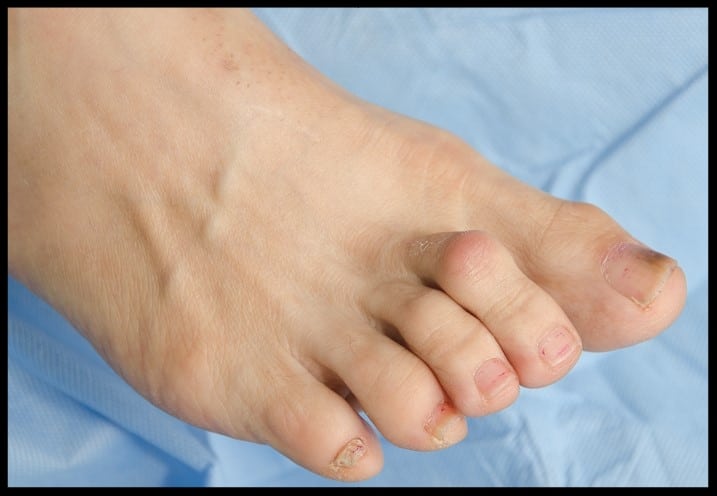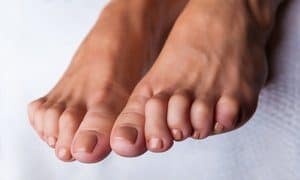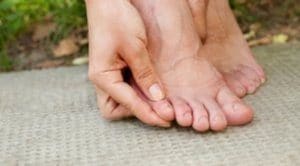
Hammertoe Treatment and other toe deformities: 
Hammertoe treatment , claw toe, and mallet toe are a group of joint conditions which occur in the smaller toes of the foot, toes 2-4. These malformations never affect the big toe, toe 1, although several other joint conditions do. Note that these are true physical deformities. They affect the shape of the joints, how they function, and can cause considerable pain.
- Hammer toe: this deformity usually occurs in the 2nd toe. The middle joint bends toward the floor, causing the toe to loosely resemble a hammer. Patients with hammer toes often have bunions as well.
- Claw toe: much as it sounds, the 4 smaller toes contract and become fixed in this position. The joints at the base of the toes curl upwards, the middle joints curl downwards, and the toes become permanently curled into a claw-like position.
- Mallet toe: as with hammer toe this deformity usually occurs in the 2nd toe yet can occur in the others as well. Think of it as a hammer toe which only affects the joint nearest the tip.
Due to their distinctive appearances these are not subtle conditions. If your toe joints start to feel uncomfortable or begin to change shape you should talk to your podiatrist about Hammertoe treatment as soon as possible. If caught early conservative treatments are much more likely to be effective, thus avoiding surgery.
What causes these Hammertoe joint deformities?
When a patient wears tight shoes over many months or years the toes are forced into a bent position. The muscles eventually become unbalanced, which ultimately causes the tendons to contract. Over time the toes become progressively harder to straighten. If this process goes on long enough the affected muscles can completely lose their ability to straighten the toes, even when the patient is barefoot. Given enough time they become effectively permanent.
Due to the length of time it takes for these conditions to develop they are much more common in adults. As you might imagine women who wear narrow-tipped shoes, especially high-heels, are particularly prone to these deformities.
This isn’t to say that all such cases are caused by tight footwear. Diabetics are prone to all types of foot problems, including the deformities mentioned above. Stroke victims sometimes experience permanent muscle contracture which can lead to these conditions. Those with joint problems like rheumatoid arthritis are also sometimes affected. Direct trauma to the toe joints can be a factor as well. So Hammertoe treatment is geared to the causative deforming factors.

